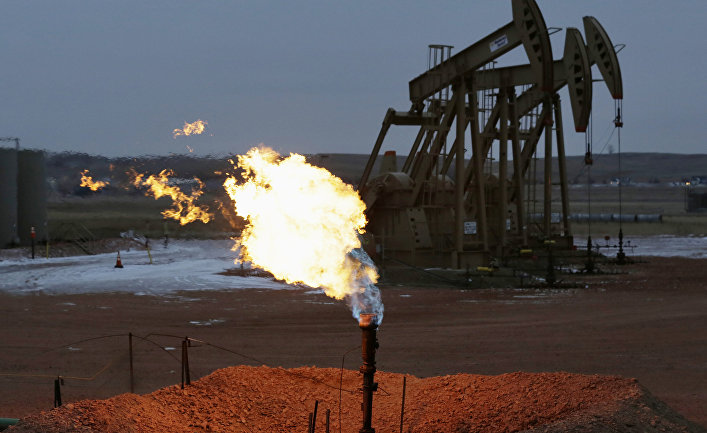The political aspect
On Wednesday the US Congress opened discussions on lifting the embargo on American exports of crude oil, which was put in place in 1975 at the peak of the energy crisis of that period. These discussions form part of the debate on budget expenditure for 2016. Congress members will be debating the issue against the background of sagging prices compared to the world benchmark – Brent crude. In trading on 14 December, January futures for Brent were trading at $36.62 per barrel. Over the past eighteen months oil has lost more than half its value, due to over-production globally and the slow-up in the Chinese economy – which is the world's largest crude consumer.
The US Congress has until 16 December to approve the US Budget for Expenditure for the 2016 Financial Year. Originally the cut-off deadline for approving the budget was set for Friday 11 December – but Congress members agreed that they needed a further five days for discussion, in order to avoid another 'shutdown' of the government system (a temporary close-down of all operations of the governmental structure).
The US is about to export oil for the first time in 40 years: https://t.co/NxUuj3Yoqu pic.twitter.com/tkkjzaJNPy
— VICE News (@vicenews) December 16, 2015
Delays over validating laws for spending the earmarked $1.15 trillion dollars of expenditure were caused by splits in opinion between Democrats and Republicans. It was the latter group which demanded that the oil embargo be lifted. They believe that opening world markets to American oil once more will bring in additional income for the USA – which would help to balance the national budget. But the Democrats imposed a condition – that the 2016 budget should include a raft of concessionary measures for the renewable energy industry.
Discussion over the lifting of the embargo had raged previously. Back in 2014 Washington made a partial lifting to enable a small shipment of oil to be made to South Korea. Given the degree to which production has increased in the USA, calls for the full lifting of the embargo have become greater. In December 2014 Congress had already prepared a draft bill for lifting the embargo, but it failed to get through. Earlier this December Congress somehow supported a separate bill for lifting the embargo, but the Senate prevented it from going to a vote – even though the banking and energy committees of the Upper House had given their approval to it earlier in the autumn.
The White House objects
The main supporters behind lifting the embargo are the members from the oil-producing States of the US – Texas, and North Dakota – and Republicans. Barack Obama's Democrat administration is threatening to block the lifting of the embargo. In October the White House pleaded with Republicans that instead of lifting the export ban, they should concern themselves more greatly with energy efficiency in American industry, and support ecologically sustainable and renewable energy sources. “We take a firm line” said White House Press Secretary Josh Ernest. “We're against lifting the embargo. But we're against other measures which are mooted in this legislation too.” Ernest would not be drawn on whether Obama would invoke a presidential veto on lifting the embargo.
In addition to Democrat support, the embargo is favored by the oil-refining industry. Unrestricted exports would eat away at their profit margins. The US Energy Ministry calculates that the US could miss out on up to $22.7 billion dollars by 2025, if the embargo is lifted. “American oil refineries would be among the first to be hit, if the embargo is lifted. For many years they've enjoyed an effective subsidy due to the ban on exports. Profit margins for American oil refineries have been at record levels recently” explained the Director of RBK's analysis agency, Small Letters, Vitaly Kriuchkov.
Abundant resources of crude have enabled American refineries to snap up production cheaply, and then sell it as refined petrochemical products for high prices on both the domestic and international markets. The profitability levels in the refinery industry has been assured from pegging world prices to North Sea Brent, rather than to the American WTI variety. The price-gap between the two benchmarks hit a record maximum in 2014.
8. Lifting the oil embargo won’t do much to emissions. Oil prices set on the global market that will be mostly unaffected by US exports.
— Alex Trembath (@atrembath) December 17, 2015
However Mikhail Krutikin, Consulting Partner for RusEnergy, doesn't share Kriuchkov's perception. “American refineries won't suffer from lifting the embargo on American crude. The USA has a glut of oil production, particular in the light categories. A good chunk of that over-production could easily be sold as exports” said Krutikhin. As the Wall Street Journal has commented, this situation offers a good chance that the embargo will actually be lifted – but this will mean agreeing to all the conditions that the White House insists upon.
There's no risk
Experts believe that if the embargo is finally lifted, there won't be any significant change in world oil prices. The overall amount of crude oil will remain largely as it is at present. “I really doubt that this will have much of an effect on world markets. The public has hyped that idea up too much” says Vladimir Milov, Director of the RBK Institute for Energy Policy. Milov believes that lifting the export embargo “is an economic issue for the producers.” According to Kriuchkov's predictions, the US is capable of producing hundreds of thousands of barrels of oil per day for world markets – although this figure would be somewhat less to begin with – perhaps 100.000 barrels daily, immediately after the embargo was lifted. “Once the export ban is removed there could well be 'psychological' price-shunts to start with – but things will soon calm down,” Kriuchkov says. Both Milov and Kriuchkov are watching the falling extraction figures in the USA – and believe that extraction is down, because of tumbling prices.

“World market prices are the biggest factor in extraction figures” says Milov. “Currently they are dropping because many projects are unable to support a $50-per-barrel price. The question of the export embargo plays no role in this. If the price were to return to $60 per barrel or above, then production figures would rise – and the embargo, once again, couldn't prevent that,” he continued.
“If the US ban on crude exports is lifted, there still won't be any glut of American oil on world markets. The USA's exports in the 1-2 years after the ban is lifted wouldn't reach more than 1.5 million barrels per day” says Krutikhin, giving the highest forecast for oil exports.
Krutikhin believes the main buyers for light American crude would be refineries in North-Western Europe and the Mediterranean. A large section of this market has already moved over to light crude, which was formerly available from Libya. Kriuchkov doubts that US oil will be suitable for Asian markets, who are more interested in supplies of new kinds of energy.






